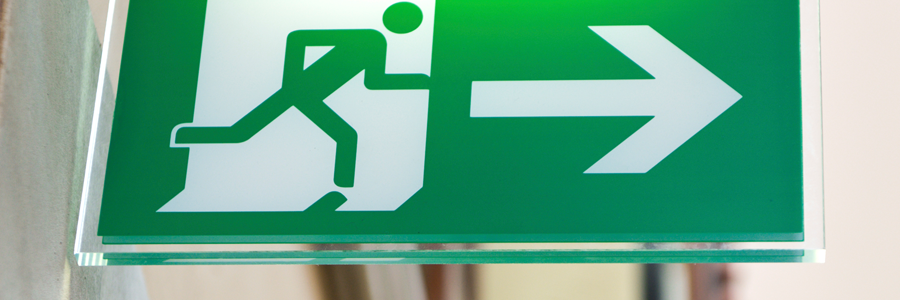
A question we hear time and time again…..
As someone needing to provide emergency lighting it is advisable to take guidance from the BS 5266 specifically the Emergency Lighting Code of Practice, It provides detailed guidance on the positioning of emergency luminaires, acceptable glare levels, and minimum height levels and enforces the provision of emergency lighting for public buildings including; retail stores, theatres, cinemas, hotels/restaurants, leisure centres and nightclubs and pubs. It also adds the significance of regularly testing your emergency lighting systems in order to make sure they meet regulatory standards.
The primary intent for emergency lighting is to ensure that sufficient illumination is provided so that people can safely navigate their way out of a building in the case of an emergency when the main power supply is cut and normal illumination fails. Emergency lighting is a legal requirement if you occupy any of the premises listed above.
It is important to make sure you choose your lighting systems carefully and consider all aspects before purchasing low cost options, which may not fulfill your requirements.
Emergency lighting is categorised as follows:
- Escape route lighting; escape routes must be effectively identified and lit so occupants can leave the premises safely.
- High risk area lighting; designed to provide efficient lighting for people involved in potentially dangerous processes or situations.
- Open area (Anti Panic) lighting; a lighting solution provided to minimise panic and ensure sufficient illumination to allow occupants to reach a place in the premises where an escape route is identified.
- Standby lighting; allows normal activity to continue — standby lighting is not a legal requirement and is a function that may or may not be required depending on the use and occupancy of the premises.
5 things you should know about emergency lighting & requirements;
- Emergency lighting is required by law and you must comply, emergency lighting enables a safe evacuation for the occupants of the building.
- Emergency lights are designed to save lives and prevent injury.
- Corporations and responsible individuals can be prosecuted in the event that the emergency lighting system fails.
- Minimum performance levels must be achieved.
By law, emergency lighting and safety systems should be regularly checked and inspected.
The Channel Safety Systems range of emergency lighting can be found here.
